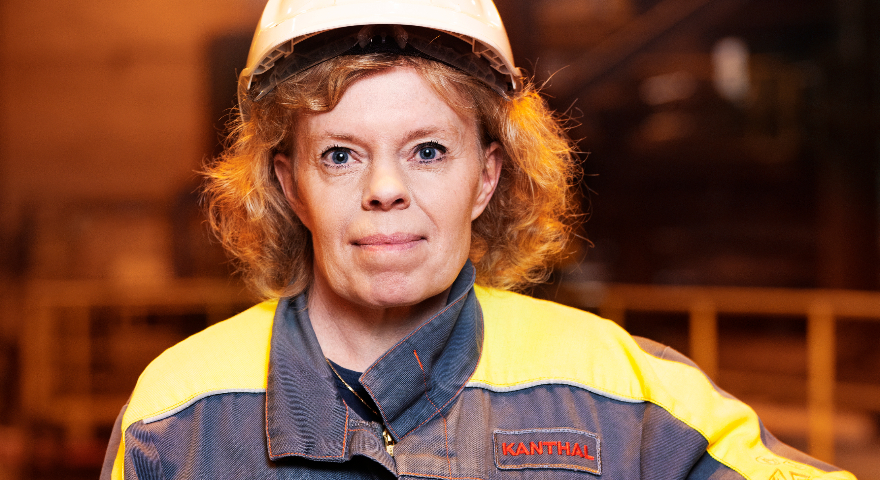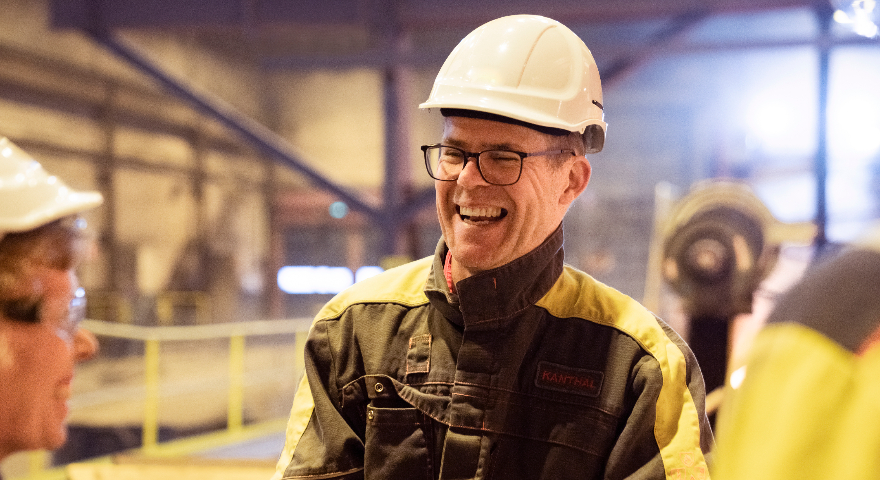At Kanthal’s steel plant in Hallstahammar, Sweden, raw material and scrap is used to produce ingots weighing between 1,400 and 2,250 kilograms. They are then placed into a pit furnace at 900 to 1,000 degrees Celsius (1652-1832℉) and left there overnight as the heat increases to 1,250 degrees Celsius (2282℉). The heated ingots are taken out using an overhead crane before being sent for hot rolling.  Stephanie Stockmeier, Senior Process Development Engineer, Kanthal.
Stephanie Stockmeier, Senior Process Development Engineer, Kanthal.
“The most important factor is that the ingot is quickly and evenly heated,” explains Stephanie Stockmeier, Senior Process Development Engineer, Kanthal. “The heating rate – how fast you can change the heat – is important because materials differ in how much heat they can absorb. The main challenge is to heat the ingots evenly and at the correct rate. Otherwise, cracks can occur during rolling if they are heated too quickly or not enough.”
With Kanthal® Super elements, the plant can gain much better control and precision over the furnace’s temperatures. In fact, it can change the temperature by 100 degrees Celsius (212℉) in just 20 minutes.
Less contamination and longer element life
The process is also much cleaner and quieter compared with gas or oil burners. Nor is there any contamination or carburization.
When the Kanthal® Super element heats, a thin layer of silicon dioxide is formed on the surface of the element, which protects it from oxidation and extends its lifetime. Erik Ström, Project Manager R&D, Kanthal.
Erik Ström, Project Manager R&D, Kanthal.
“Because Kanthal® Super has such a long product life in this temperature range, we can typically go several years without maintenance,” says Erik Ström, Project Manager R&D, Kanthal. “Not having to use oil and gas also lowers the noise level and eliminates emissions, which is much better for the plant’s workers.”